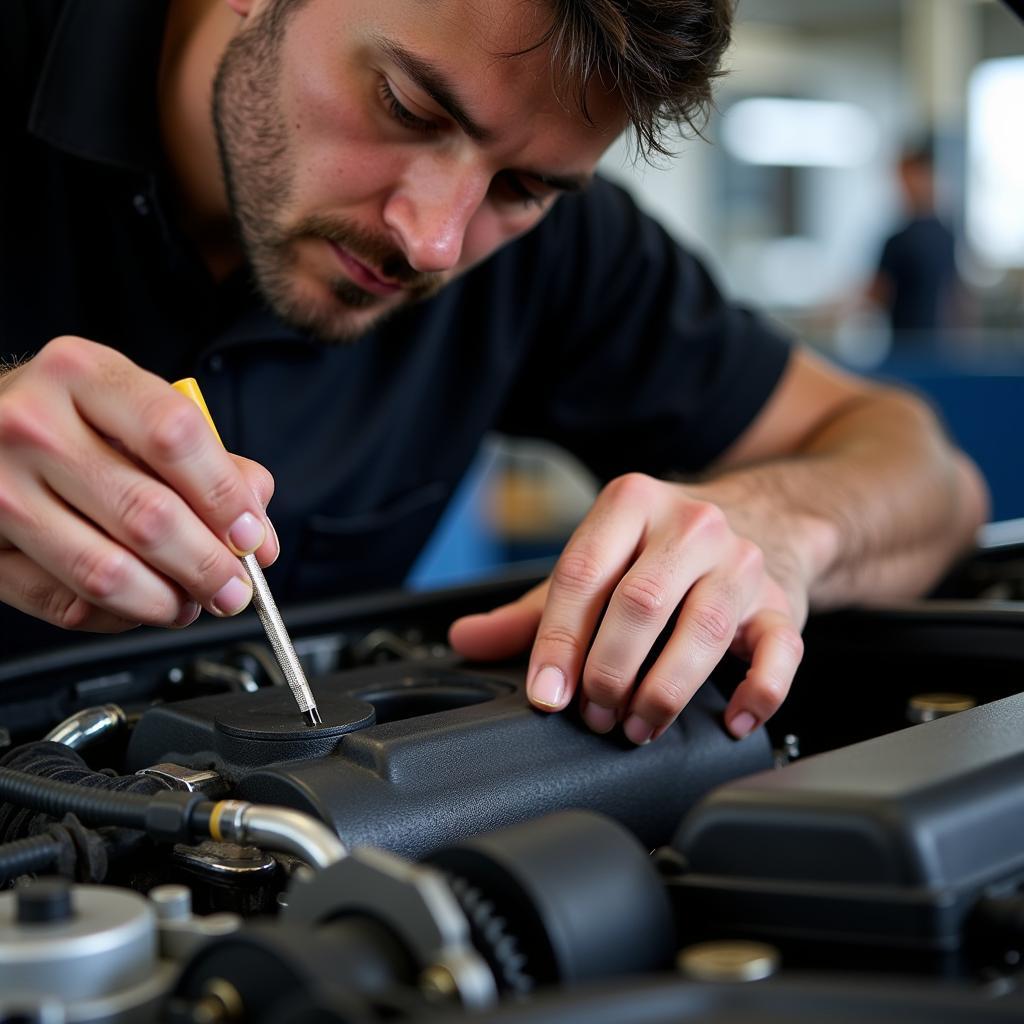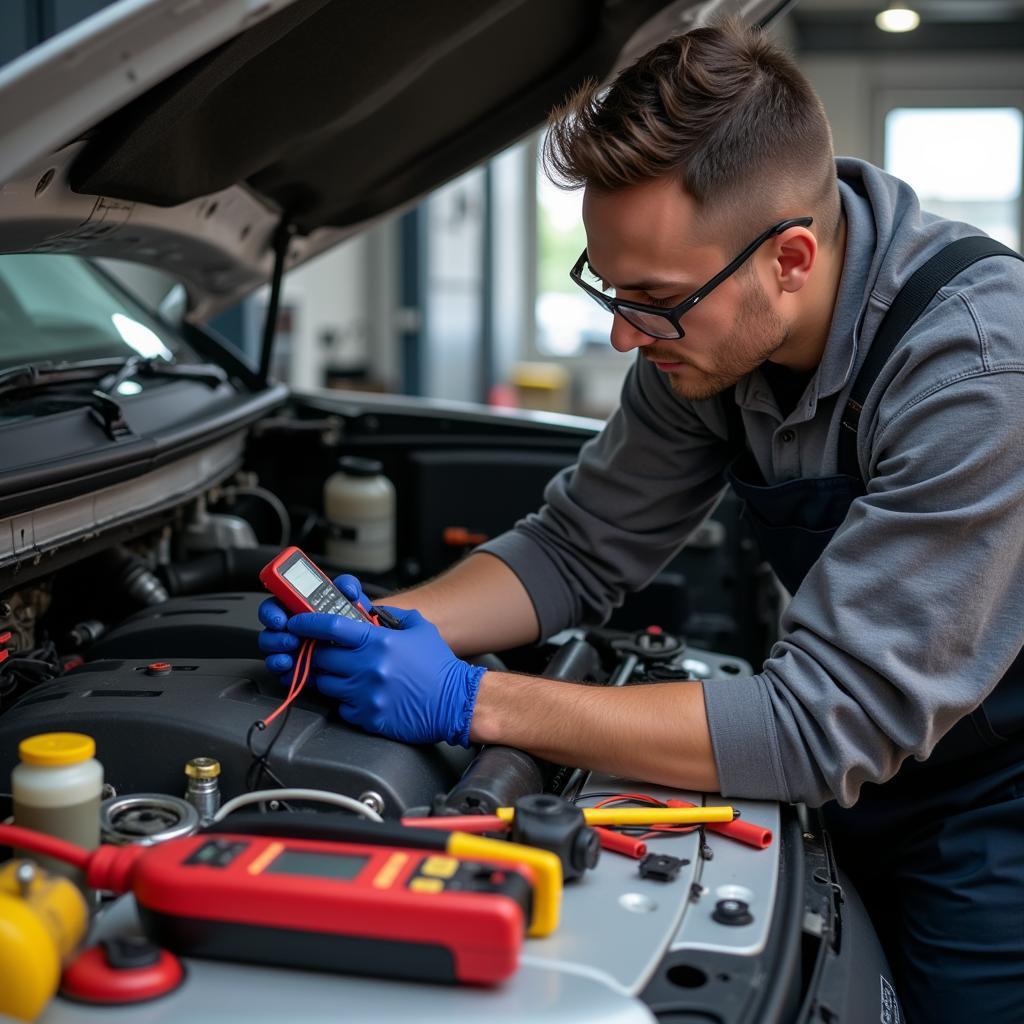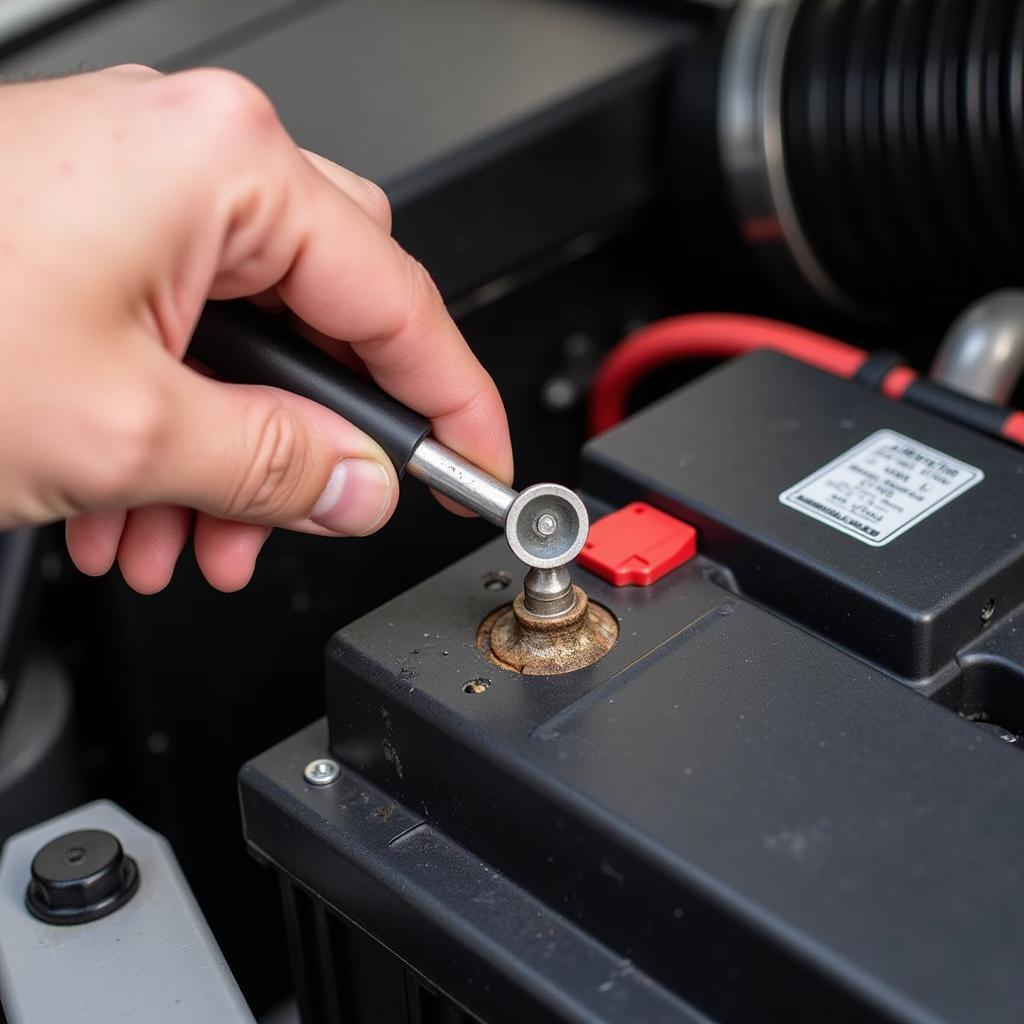Rust, the bane of every car owner’s existence, can be tackled effectively with chemical solutions. This guide dives deep into the world of chemically fixing rust on your car, providing you with the knowledge and tools to combat this persistent problem. Whether you’re a seasoned mechanic or a DIY enthusiast, this guide offers valuable insights into the best practices and effective solutions for tackling rust.
Rust is a natural electrochemical process that occurs when iron reacts with oxygen and water. This reaction creates iron oxide, the reddish-brown substance we recognize as rust. Left unchecked, rust can significantly compromise the structural integrity of your car. Chemically fixing rust involves using specialized products to convert or remove the rust, preventing further corrosion and protecting your vehicle. Understanding the chemical processes involved is crucial for selecting the appropriate solution and achieving optimal results.
Understanding Rust Converters and Removers
When dealing with rust on your car, you’ll encounter two primary chemical solutions: rust converters and rust removers. While both address the issue, they function differently. Rust converters, as the name suggests, transform existing rust into a stable, paintable surface. They typically contain tannic acid or phosphoric acid, which react with iron oxide to create iron tannate or iron phosphate, respectively, forming a black, inert layer. Rust removers, on the other hand, completely dissolve the rust, leaving behind bare metal. They often contain strong acids, such as hydrochloric acid or oxalic acid, which require careful handling due to their corrosive nature.
Choosing the Right Chemical Solution for Your Car
Selecting the right chemical solution depends on the severity and location of the rust. For light surface rust, a rust converter is usually sufficient. However, for more severe rust, particularly if it has penetrated deep into the metal, a rust remover may be necessary. Consider the following factors when making your choice:
- Extent of rust: Superficial rust can be addressed with converters, while deep-seated rust often requires removers.
- Accessibility: Some areas may be difficult to reach with certain application methods.
- Future treatment: Do you plan to paint or apply another protective coating after the rust treatment?
- Safety precautions: Always wear appropriate safety gear, such as gloves, goggles, and a respirator, when working with rust chemicals.
Are you looking for information on how to fix rust on a car roof? Check out how to fix rust on a car roof.
Chemically Fixing Rust: A Step-by-Step Guide
Before diving into the chemical application, proper surface preparation is crucial. This involves removing loose rust, dirt, and grease. You can use a wire brush, sandpaper, or even a sanding disc attached to a drill.
- Clean the rusted area: Thoroughly clean the affected area with soap and water, then dry it completely.
- Remove loose rust: Use a wire brush, sandpaper, or a sanding disc to remove loose rust and paint.
- Apply the chemical solution: Follow the manufacturer’s instructions carefully. For rust converters, apply a thin, even coat. For rust removers, allow the product to dwell for the specified time.
- Neutralize and clean: After the rust converter or remover has done its job, neutralize the area as directed by the product instructions. This typically involves rinsing with water or a neutralizing solution.
- Prepare for further treatment: If you plan to paint or apply another protective coating, prime the area after the neutralized surface is completely dry.
For more severe cases of rust, you can refer to our guide on how to fix severe car rust. If your car’s chassis is affected, our article on fix rust rot in car chassis can provide valuable insights.
“When using chemical rust removers, always prioritize safety. Wear proper protective gear and work in a well-ventilated area,” advises John Smith, a certified automotive technician with over 20 years of experience.
Maintaining a Rust-Free Car
Prevention is always better than cure. Regular washing and waxing can help protect your car’s paint and prevent rust formation. Keeping your car clean, especially during winter months when road salt is prevalent, is crucial. Regular inspections can also help detect rust early on, allowing for prompt treatment. You can find more information on fixing rust spots on cars. For those wondering about the cost of fixing rust on a car hood, you can check out our guide on how much to fix rust on car hood.
“Regular inspections and prompt treatment are key to preventing rust from becoming a major problem,” adds Sarah Jones, a leading automotive engineer. “Early detection and intervention can save you significant time and money in the long run.”
Conclusion
Chemically fixing rust on your car is a viable solution for combating this common problem. By understanding the different chemical options available, following proper procedures, and prioritizing safety, you can effectively treat rust and protect your vehicle. Remember to always consult the manufacturer’s instructions for specific product application and safety guidelines. For further assistance, feel free to contact us at AutoTipPro, +1 (641) 206-8880, 500 N St Mary’s St, San Antonio, TX 78205, United States. We are dedicated to helping you maintain a rust-free and reliable vehicle.







Leave a Reply